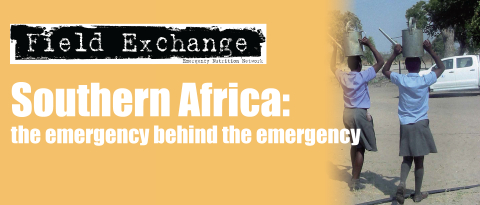Lessons on Cash for Work in Somalia
Summary of published research1

Community work in the CFW programme in Boden
A recent paper published in Disasters describes the experience of Action Contre la Faim's (ACF) cash for work (CFW) programme in southern Somalia. The project was implemented between June 2004 and October 2005 as an integral part of a food security and water and sanitation programme in Wajid district. It was a response to the gradual return and stabilisation of the population in the area, which had been affected by conflict since 1991. The primary goal of the CFW project was to increase the diversity of incomes in the target areas. Secondary aims were to enable restocking and to increase access to water.
In total, USD 138,891 was distributed to 4,029 households during the 16-month project period, reaching almost 25,000 direct beneficiaries. The amount per household varied between USD 30 and USD 48. By the end of the scheme, 31 water catchments had been rehabilitated.
The four main reasons why cash was used were;
- Lack of purchasing power at household level
- A vast array of needs, ranging from basic items to restocking
- Existence of functional markets
- A monetised economy.
Additionally, when analysing security risks, it was judged that a commodity distribution would potentially be riskier than a cash distribution, given the logistics.
CFW as opposed to direct cash distributions was chosen because there was meaningful community work to be performed, notably with regard to village-level water catchments. Also, it was determined that targeting would be easier if the project had a work component. ECHO funded the programme under a wider programme to address food insecurity, malnutrition and health in Wajid and Mogadishu.
Selected projects were designed to be workintensive and to benefit the whole community, with communities making the final decision. The choice of water catchment rehabilitation was based on participatory methods of problem identification and problem ranking by villagers. The selection of beneficiaries occurred at village and household level with geographical targeting serving as the initial filter. The final selection criterion (defined by the communities at the village level) had livestock ownership as its determining factor (no camels or cattle, and no more than five sheep or goats). Registration and the selection of beneficiaries always happened during a public meeting, in the presence of ACF staff.
In order to develop a common understanding of the roles and responsibilities of both the beneficiary community and ACF, a Community Action Plan (CAP) was drawn up with the community. The CAP instilled a sense of community ownership and responsibility with regard to project activities.
During the first phase, ACF distributed cash directly to beneficiaries. The mode of distribution was changed for the second phase, due to security concerns. Instead the distribution was based on a voucher system, and the dispatch of cash itself was subcontracted to local business executives. ACF distributed vouchers directly to beneficiaries, which the business people cashed.
Monitoring took place in two phases; monitoring of the project work and post-distribution monitoring of the distributed cash or vouchers.
Conclusion

Issuing vouchers to exchange for cash in the second phase of the ACF project
The programme proved to be an efficient way of delivering relief in Somalia. It largely achieved its main aim of diversifying household income sources and increasing access to water. However, progress towards restocking was more limited. Beneficiary satisfaction was high. Several key factors contributed to the positive outcome of the programme:
- Cash was a response to an identified need.
- Public works projects stemmed from a real need.
- Existing commercial networks were functional.
- There was strong community involvement and the use of existing community structures, total transparency, robust supervision and monitoring tools and a strict protocol on the management of security risks.
- The communities accepted ACF.
Cash as a relief response offers major possibilities for future work on two levels. From the donor or agency standpoint, it is an alternative or a complement to commodity distribution, notably food aid. From the beneficiary perspective, it enhances dignity and the degree of empowerment, enabling them to take control of the relief themselves and to adapt it to individual needs in a timely manner.
1Mattinen H and Ogden K (2006). Cash-based interventions: lessons from southern Somalia. Disasters, 30 (3), pp 297-315
Imported from FEX website


